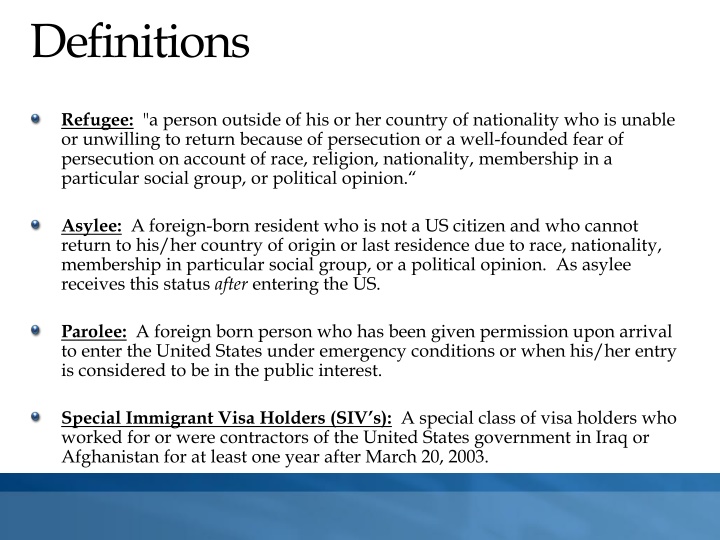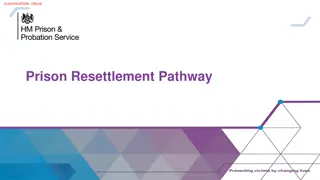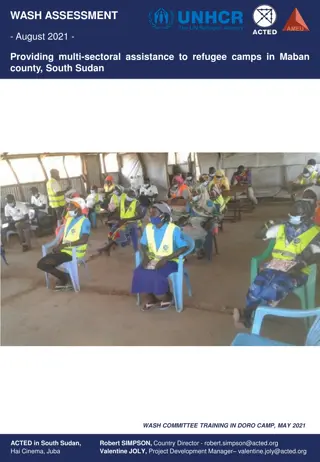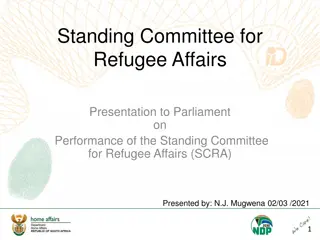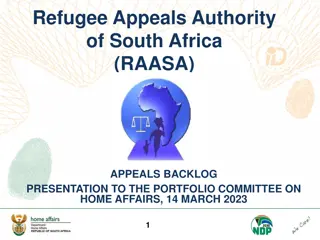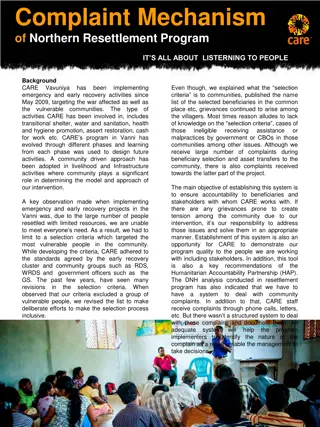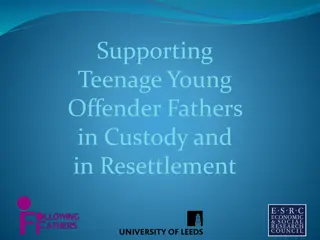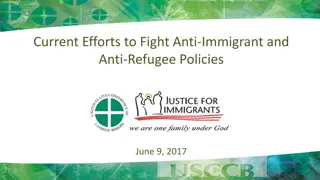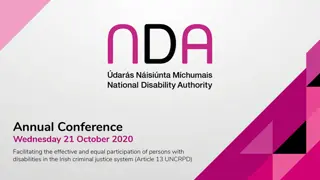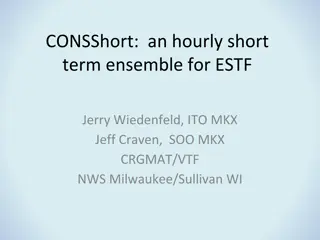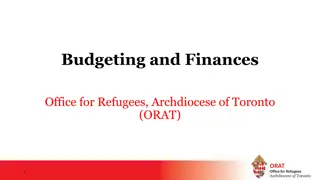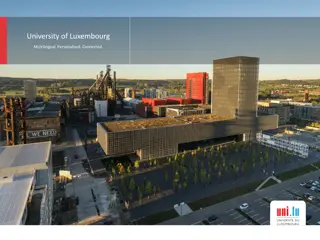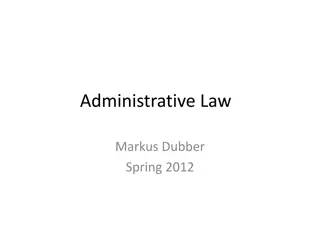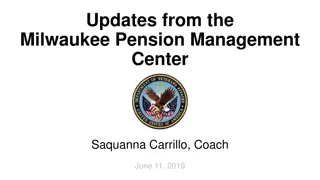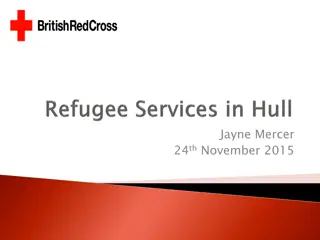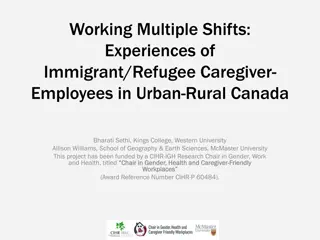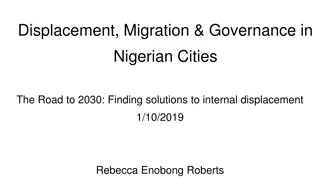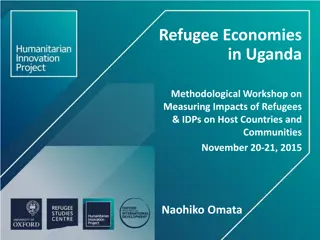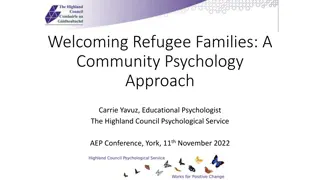Refugee Resettlement in Milwaukee: A Comprehensive Overview
The refugee resettlement landscape in Milwaukee is multifaceted, with thousands of individuals finding safety and support in the region since 1995. Various organizations, such as the Milwaukee Area Refugee Consortium (MARC), provide crucial services to aid refugees in their integration journey. Notable refugee populations hail from countries like Laos, Burma, Iraq, Former Yugoslavia, and Somalia, with diverse backgrounds necessitating specialized resources to address language barriers, religious accommodations, and family compositions. The Wisconsin State Refugee Office plays a pivotal role in coordinating resettlement efforts, showcasing a rich tapestry of cultures and needs within the shelter setting.
Download Presentation

Please find below an Image/Link to download the presentation.
The content on the website is provided AS IS for your information and personal use only. It may not be sold, licensed, or shared on other websites without obtaining consent from the author.If you encounter any issues during the download, it is possible that the publisher has removed the file from their server.
You are allowed to download the files provided on this website for personal or commercial use, subject to the condition that they are used lawfully. All files are the property of their respective owners.
The content on the website is provided AS IS for your information and personal use only. It may not be sold, licensed, or shared on other websites without obtaining consent from the author.
E N D
Presentation Transcript
Definitions Refugee: "a person outside of his or her country of nationality who is unable or unwilling to return because of persecution or a well-founded fear of persecution on account of race, religion, nationality, membership in a particular social group, or political opinion. Asylee: A foreign-born resident who is not a US citizen and who cannot return to his/her country of origin or last residence due to race, nationality, membership in particular social group, or a political opinion. As asylee receives this status after entering the US. Parolee: A foreign born person who has been given permission upon arrival to enter the United States under emergency conditions or when his/her entry is considered to be in the public interest. Special Immigrant Visa Holders (SIV s): A special class of visa holders who worked for or were contractors of the United States government in Iraq or Afghanistan for at least one year after March 20, 2003.
A Refugees Story Obtains refugee status from Refugee flees from his/her country of origin to seek safety Determined admissible to the U.S. Pre-Travel: Arrives in the U.S. Assurance Medical Clearance Security Clearance Cultural Orientation Moves into new home
Refugees Living in Milwaukee Data gathered since 1995: 7194 refugees have been resettled into South-East Region of Wisconsin (7 counties) Kenosha 34 Milwaukee 6839 Ozaukee - 39 Racine 63 Walworth 32 Washington 66 Waukesha - 121 Updated: May 30,2013
Where are refugees from? Laos, Burma, Iraq, Former Yugoslavia, and Somalia represent the largest populations Other refugees are from the following regions: Southeast Asia Middle East Africa Former Refugee Populations
Available Resources The WI State Refugee Office coordinates refugee resettlement throughout the state Agencies serving refugees in Milwaukee are organized into a Consortium, the Milwaukee Area Refugee Consortium (MARC): Services Jewish Family Volags: Catholic Charities International Institute of Wisconsin Lutheran Social Services Pan African Community Association Specialist Providers: Sebastian Family Psychology Practice Neighborhood House MAXIMUS & UMOS MILES Mutual Assistance Agencies
Needs within a shelter setting Language barriers Literacy Levels (functional literacy) Religious accommodations (prayer space, holidays, foods, meal times, gender roles) Modes of communications (verbal vs. non-verbal) Family Compositions Gender groupings
